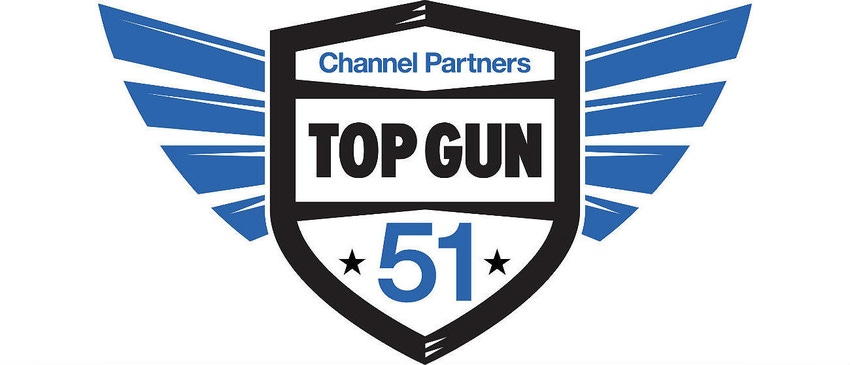Garrett Gee was with Level 3 Communications for more than 11 years.

Garrett Gee was an accomplished channel chief at Level 3 Communications, and he’s since taken his expertise and signature ease of doing business to CenturyLink.
Gee joined CenturyLink after the telecommunications giant acquired Level 3 more than two years ago. He then began co-leading CenturyLink’s channel with John DeLozier, and then became overall channel chief when DeLozier joined 8×8.

CenturyLink’s Garrett Gee
Gee addressed hurdles head on when dealing with the acquisition. Not many leaders would have been so calm, cool and collected during one of the largest M&As in the history of the channel.
Gee is part of Channel Partners’ Top Gun 51, which recognizes a new generation of channel executives, those who build and execute programs in a way that drives partner, customer and supplier success.
Gee was with Level 3 for more than 11 years, and before that held director and management positions with ICG Communications and AT&T.
In a Q&A with Channel Partners, Gee talks about his history in the channel and strategies that work for partners.
Channel Partners: How did you first become involved in the channel? Was it part of your overall career plan?
Garrett Gee: Although I began my career in the telecommunications industry back in 1996, I didn’t start focusing on the indirect channel until I came to Level 3 Communications in 2006. I immediately discovered my passion for working with partners to bring the power of technology to an even larger audience. I thrive on the opportunities and complexities in working with partners, and firmly believe in the continued incredible growth potential for the indirect channel.
We recently unveiled our “Top Gun 51,” a list of today’s channel executives who deserve recognition for building and executing programs in a way that drives partner, customer and supplier success. |
CP: Have you been responsible for building channel programs from the ground up? If so, how did your experience come into play in these processes?
GG: At Level 3 Communications, one of my main responsibilities was to help build an indirect sales strategy and partner program. Having worked previously in provisioning and engineering, I understood the challenges associated with implementing technology solutions for customers. My background also provided insights into the importance of an excellent customer experience. This focus on the customer has always been foundational to my views on building an optimal, thriving partner program.
CP: What have you learned most from your experience with the channel and partners?
GG: Rapidly evolving technology places great demands and pressures on today’s businesses. Customers need and appreciate partners who they can trust to guide them through these technological complexities and challenges. The indirect channel has built a successful model and reputation to be these trusted, expert partners. I have learned that the need for indirect channel partners will continue to grow in importance as they refine their businesses to provide elevated business value and expertise to customers.
CP: What are the components of a successful channel program? Are there things that used to work, but now don’t?
GG: Successful indirect channel programs provide their partners with comprehensive, simple support that starts with full onboarding and moves through the entire sales life cycle. Companies need to offer partner benefits like training, pre- and post-sales support, and marketing programs and tools that make it easy for partners to understand and sell their services. It is also critical to ensure the right compensation and incentives structure is in place to make selling your solutions more attractive and lucrative than the competition. The most successful partner programs are those where indirect partners have easy access to information, resources and tools they need to sell your full portfolio. The indirect channel is very mature and competitive, so it is important to …
… ensure that all elements of an indirect partner program make selling your portfolio of services natural and the first/best option. The ultimate drivers of longevity and success of a partner program come down to continued commitment and investment in partners — and building and maintaining mutual trust.
CP: What do you consider your biggest accomplishments in working with the channel?
GG: I am proud we have built an indirect channel environment at CenturyLink where our employees, partners and customers are thriving and can be successful. Some recent key channel-related accomplishments we championed included: the collaboration with partners in the development of our new, mutually beneficial CenturyLink channel partner agreement; launched several internal transformation efforts to maximize the partner and customer experience; [and] led development of new programs for partners to target the medium business segment. The indirect channel is a growth engine for CenturyLink and we continue to maintain our unwavering commitment and investment in our channel partners.
CP: What are your career goals going forward?
GG: I am focused on continuing to make CenturyLink’s channel partner program one of the premier programs in the industry. We understand that our partners are critical to our growth and success, and I want to ensure they have the right tools/resources, support and incentives to be successful with their customers. One of my biggest goals for 2020 is to make CenturyLink easier to do business with for both our partners and customers.
CP: What sort of advice would give someone who is just starting out in channel leadership?
GG: Building relationships and fostering your network are the basis of a successful indirect partner program. Ensuring you are consistently communicating with your partners throughout all stages of the sales life cycle is critical. Partners need to know that the success of their customers is just as important to you as it is to them. Lastly, be honest and own up to any missteps. Mistakes will happen, but relationships are generally only impacted when you don’t acknowledge those mistakes and communicate how you will work to make it right.
Read more about:
AgentsAbout the Author(s)
You May Also Like


